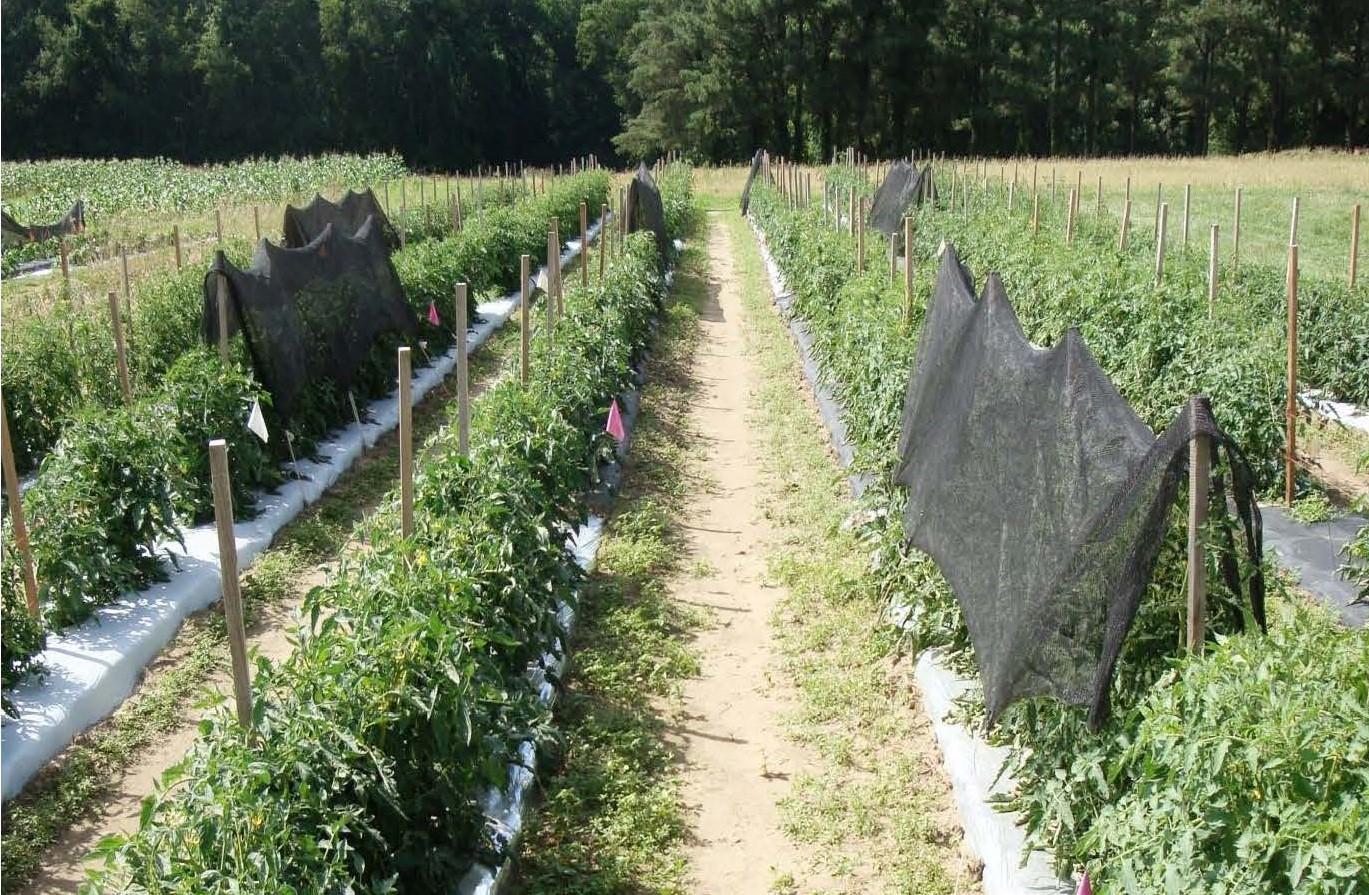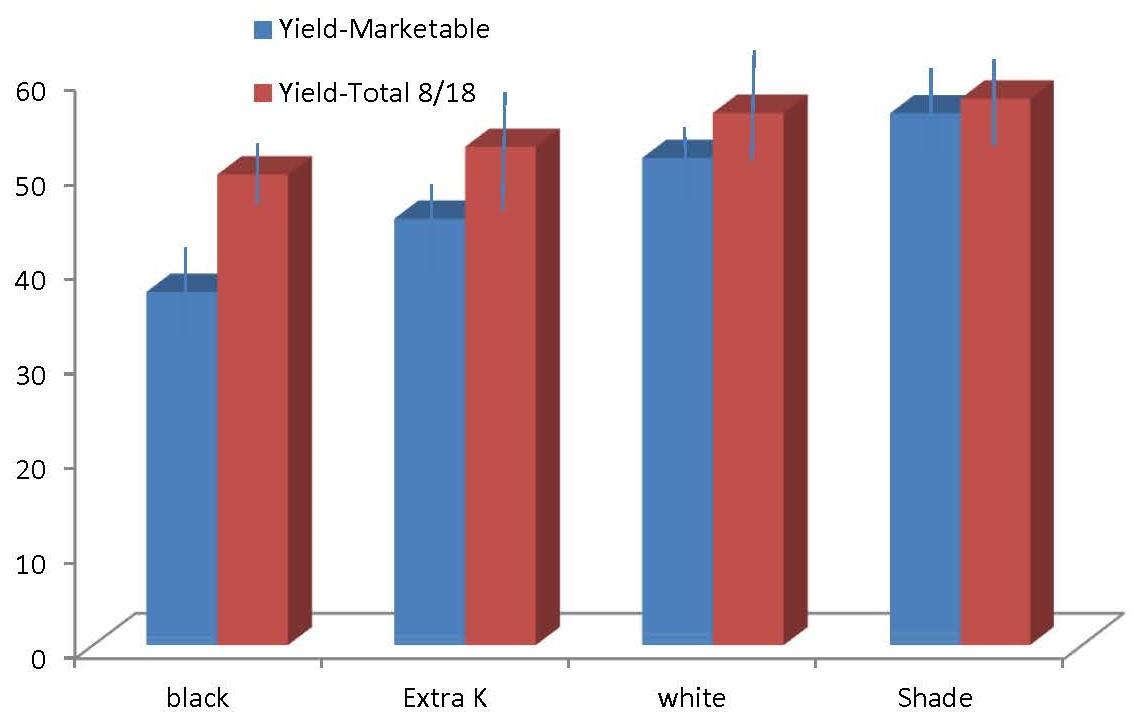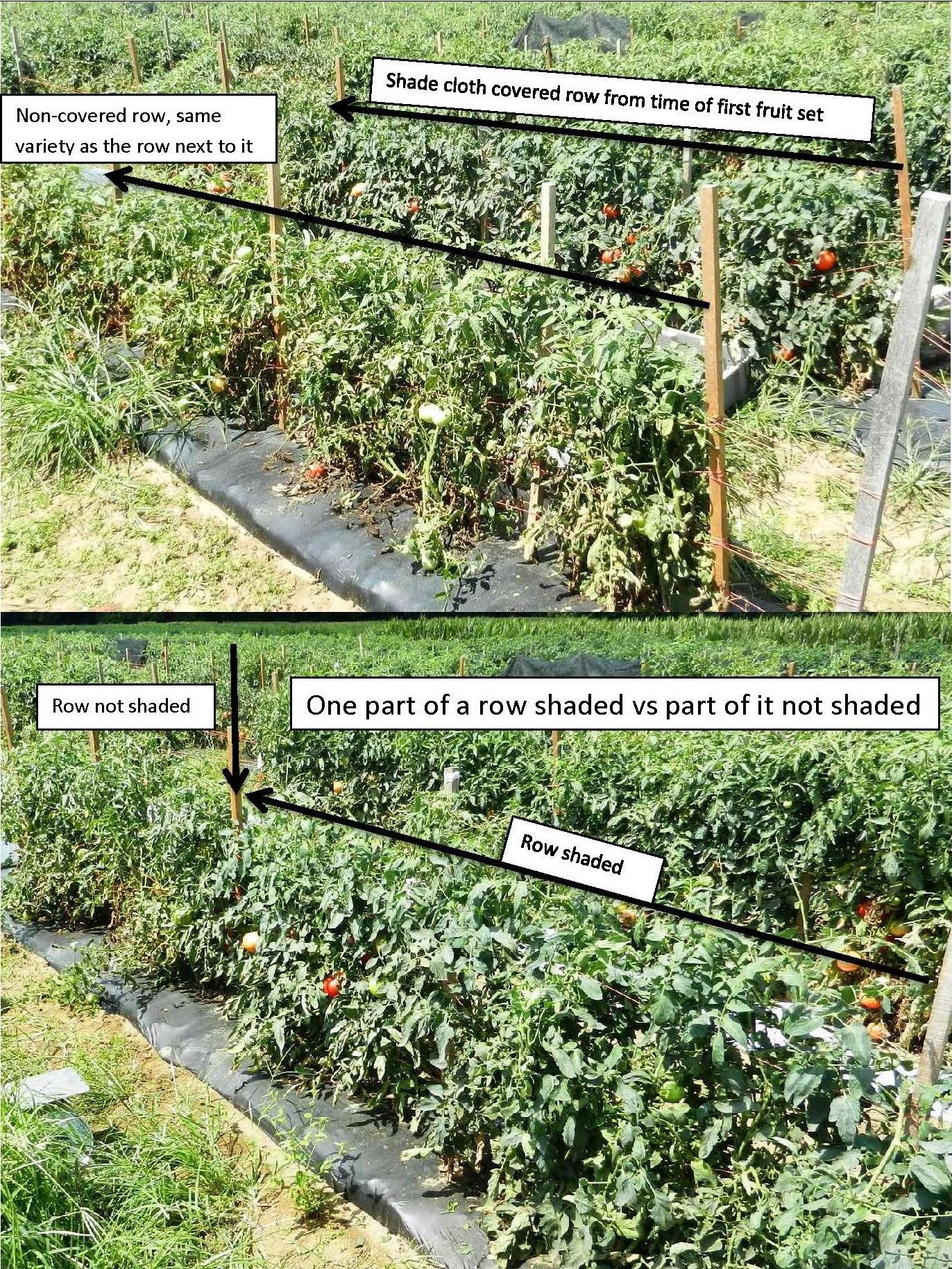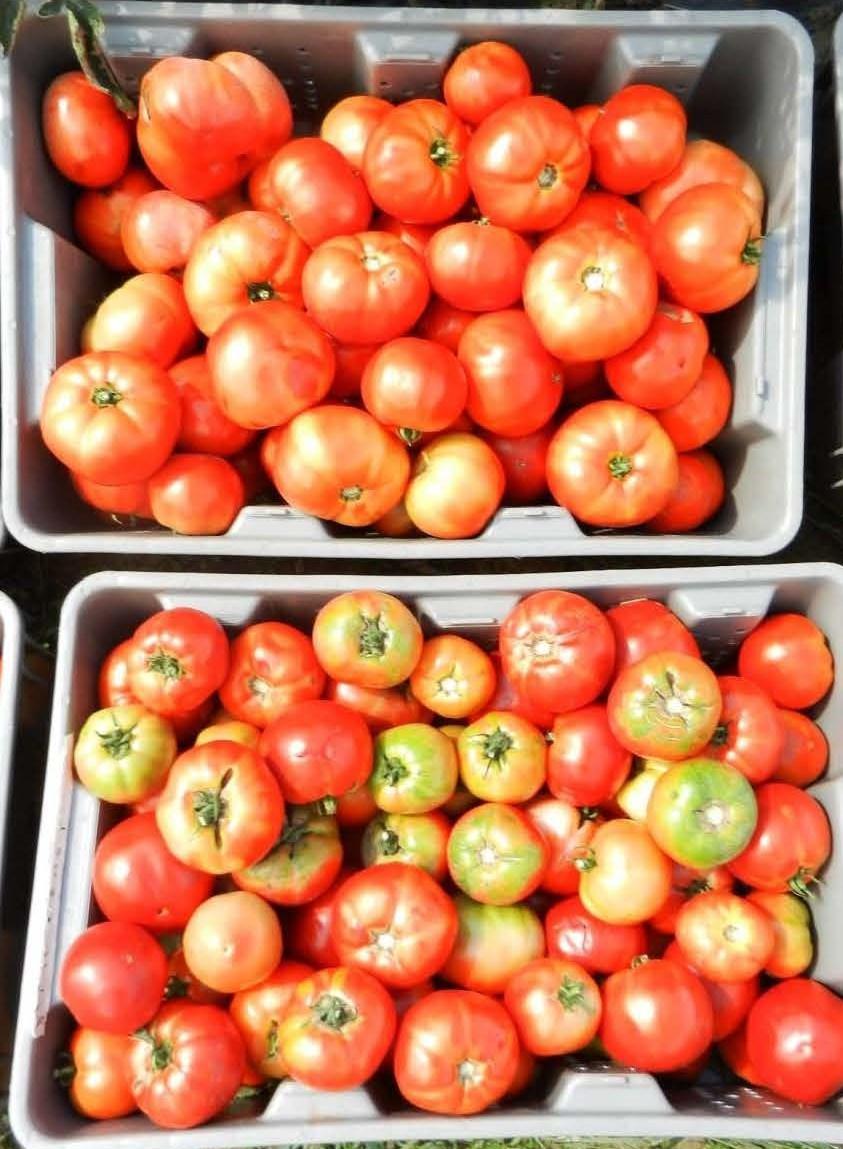
Tomato plants covered with 30% shade, July 5, 2012
Tomato plants were transplanted on May 7, 2012 into black (grower standard), white or reflective plastic mulch.
Five different varieties of tomato were used: Mt Spring+, Celebrity, Mt Fresh+, Crista and Scarlet Red.
When tomato plants began to develop fruit, a 30% shade cloth was randomly placed over 6-10 plants per row.
All plants were treated with fungicides four times (chlorothalonil and copper). Shaded plants were sprayed through the shade cloth.
Shade cloth covered 50-70% of the plant, bottom of plants were not shaded.
At each harvest (5 harvests) the shade cloth was removed from one side of a row and laid over the other side, once harvest was over shade was placed back in its original position.
Two types of yield were taken. Total yield: All ripe tomatoes were picked off a plant and were counted and weighed and Marketable yield: Tomatoes that rated extra large or large with no defects, were counted and weighed.
At the end of harvest shade cloth was removed completely and comparisons between plants were taken.

from rows with black or white plastic mulch, extra potassium added or that had a 30%
shade cloth. For this presentation compare the black vs the shade.


Bottom bin: Tomatoes harvested from black plastic rows with no shade. Total harvest: the poor looking (blotchy color, cracked, blossom end rot, etc. and smaller tomatoes) will be removed to take ‘Marketable yield’.